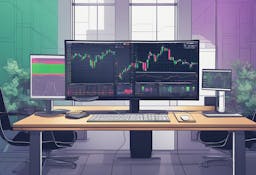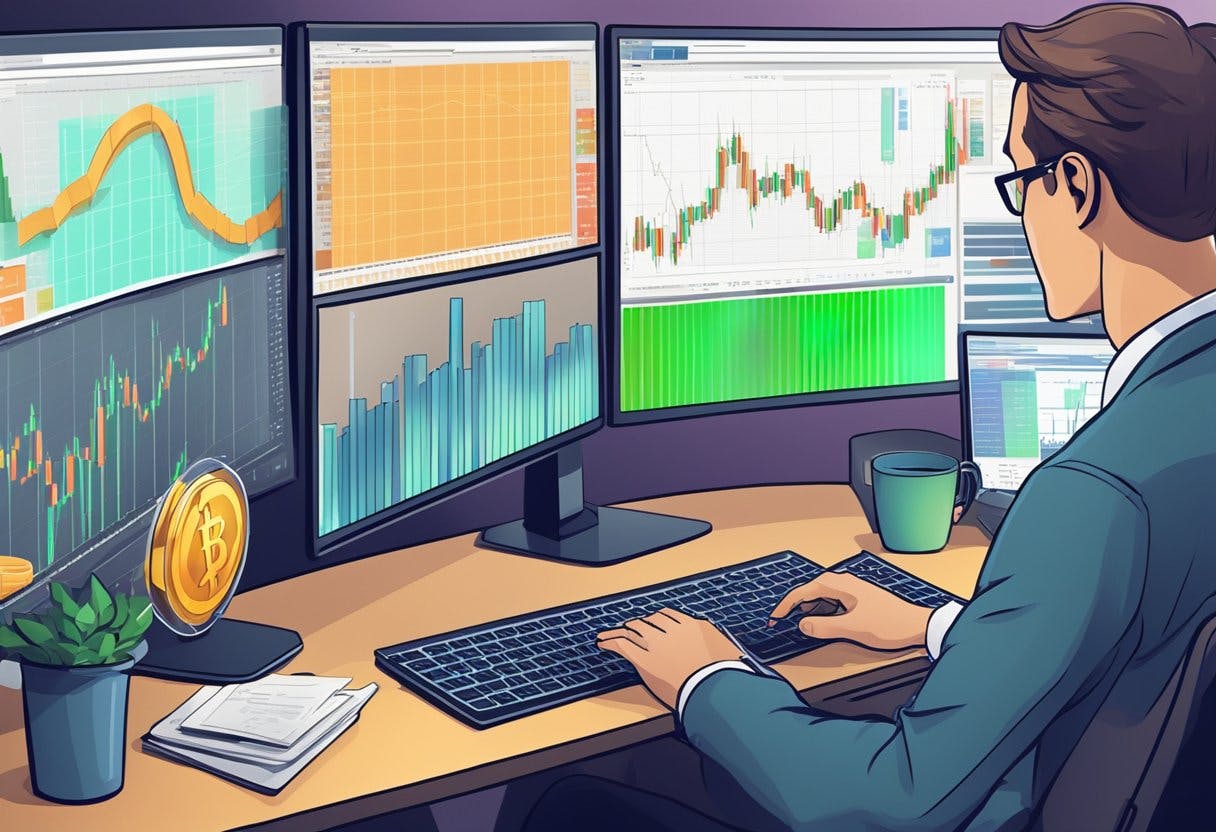
Margin trading in the crypto world is a popular investment strategy that allows traders to borrow funds to increase their buying power and magnify their gains. It is a high-risk, high-reward approach that requires a deep understanding of the market and a solid risk management plan. The practice has gained popularity in recent years due to the volatile nature of the crypto market, which can provide significant returns to traders who are willing to take on the risk.
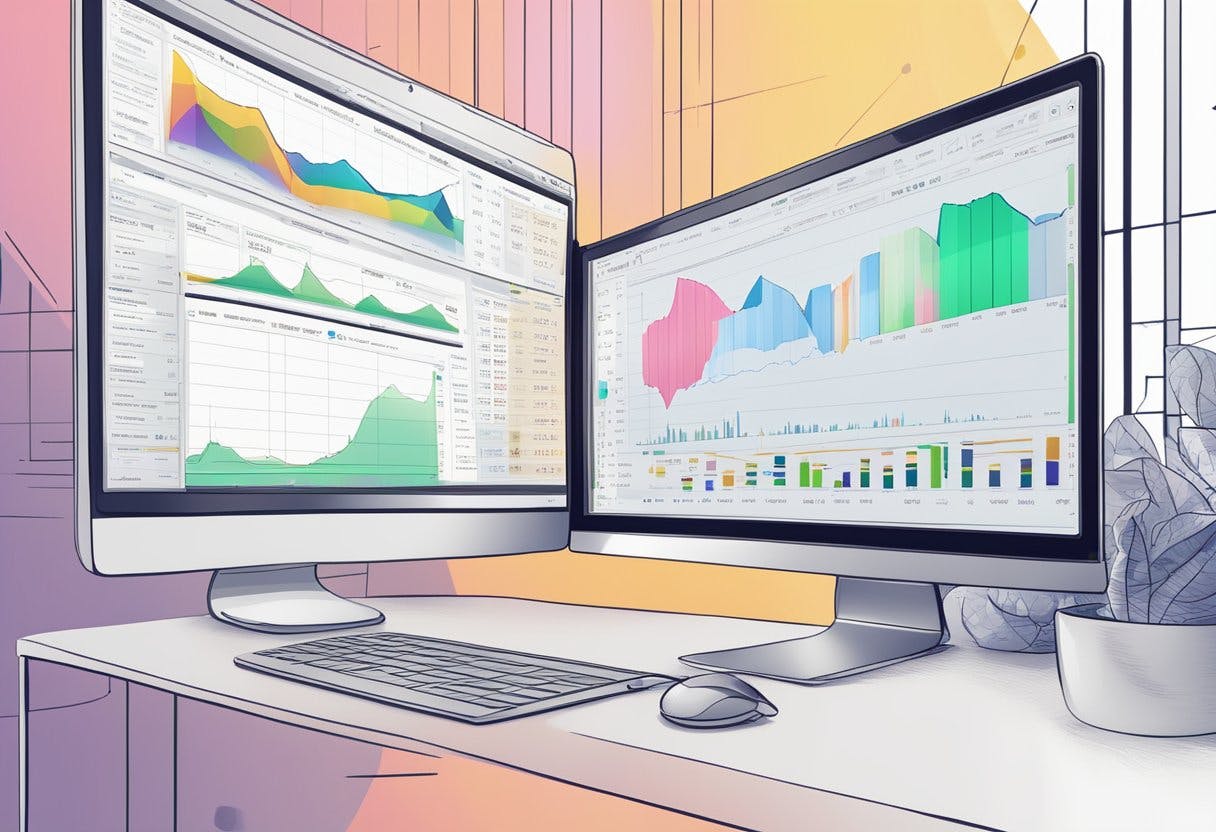
While margin trading can be lucrative, it also comes with significant risks. Traders who use leverage to increase their buying power can also magnify their losses, potentially leading to significant financial losses. Additionally, margin trading requires a solid understanding of the market and the ability to quickly react to changes in market conditions. Traders who lack experience or knowledge may find themselves in a precarious financial situation.
Key Takeaways
- Margin trading in the crypto world is a high-risk, high-reward investment strategy that requires a deep understanding of the market and a solid risk management plan.
- While margin trading can be lucrative, it also comes with significant risks that can lead to significant financial losses.
- Traders who lack experience or knowledge may find themselves in a precarious financial situation.
Understanding Margin Trading

Definition and Mechanics of Margin Trading
Margin trading is a strategy that allows traders to borrow money from a broker or an exchange to purchase more assets than they could with their own funds. This is done by putting up collateral, usually in the form of cryptocurrency, which acts as security against the borrowed funds. The borrowed funds are then used to open a larger position than the trader could with their own funds.
The mechanics of margin trading are relatively simple. The trader borrows funds from the broker or exchange, and in return, they put up collateral. The amount of collateral required varies depending on the exchange or broker and the asset being traded. The borrowed funds are then used to open a position in the market. If the position generates a profit, the trader keeps the profit, minus the interest charged on the borrowed funds. If the position generates a loss, the trader is responsible for paying back the borrowed funds, plus interest.
Leverage Explained
Leverage is the use of borrowed funds to increase the potential return on an investment. In margin trading, leverage is used to magnify the gains or losses of a position. For example, if a trader borrows $1000 to open a position worth $10,000, they are using 10x leverage. This means that if the position generates a profit of 10%, the trader would make a profit of $1000, or 100% return on their initial investment. However, if the position generates a loss of 10%, the trader would lose $1000, or 100% of their initial investment.
Leverage can be a powerful tool in the hands of an experienced trader, but it can also be dangerous for inexperienced traders. The higher the leverage used, the greater the potential return, but also the greater the potential loss. It is important to understand the risks of leverage before using it in margin trading.
Comparing Margin Trading to Spot Trading
Spot trading is the buying and selling of assets for immediate delivery. In spot trading, the trader uses their own funds to purchase an asset, and they own the asset outright. In contrast, margin trading allows traders to borrow funds to purchase assets they could not afford with their own funds. This allows traders to open larger positions and potentially generate greater returns. However, it also increases the risk of losses, as the trader is responsible for paying back the borrowed funds, plus interest.
In summary, margin trading is a strategy that allows traders to borrow funds to purchase more assets than they could with their own funds. Leverage is used to magnify the gains or losses of a position, and the trader is responsible for paying back the borrowed funds, plus interest. Margin trading can be compared to spot trading, which involves buying and selling assets for immediate delivery.
Risks and Challenges of Margin Trading
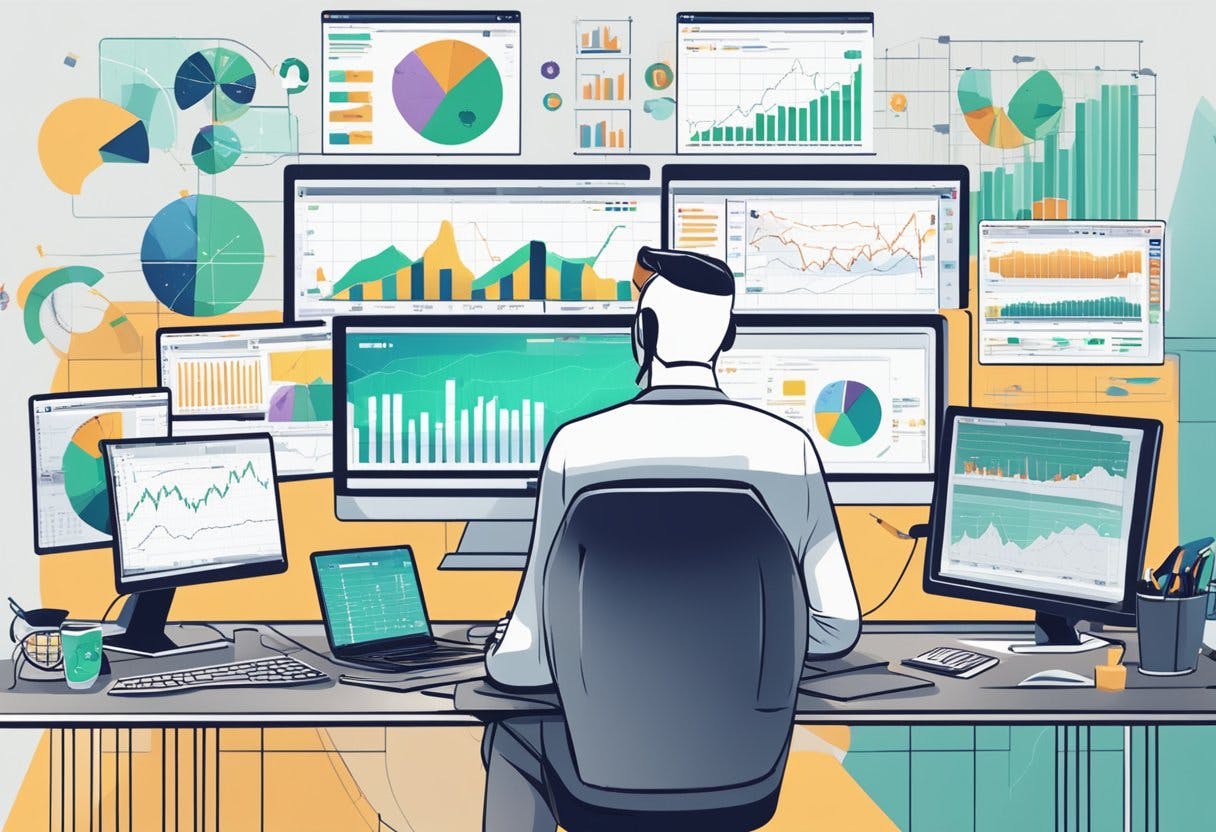
Margin trading is a popular investment strategy in the crypto industry, but it is not without its risks. Here are some of the major risks and challenges associated with margin trading:
The Risk of Liquidation
One of the biggest risks of margin trading is the risk of liquidation. If the value of the assets in a trader’s account falls below a certain threshold, known as the liquidation price, the trader’s position will be automatically closed out by the exchange. This can result in significant losses for the trader.
Maintenance Margin Requirements
Margin trading also requires traders to maintain a certain amount of funds in their account as collateral. Known as the maintenance margin, this requirement can be challenging for traders who have limited funds to invest. If the value of their assets falls below the maintenance margin, they may be forced to deposit additional funds or risk having their position liquidated.
Interest Rates and Fees
Margin trading also comes with interest rates and fees that can eat into a trader’s profits. The interest rate charged on a margin loan can be high, and traders may also be subject to additional fees for opening and closing positions.
To manage these risks, traders must have a solid risk management strategy in place. This includes setting stop-loss orders to limit potential losses, diversifying their portfolio to reduce volatility, and closely monitoring market conditions to identify potential risks.
Risk Management in Margin Trading
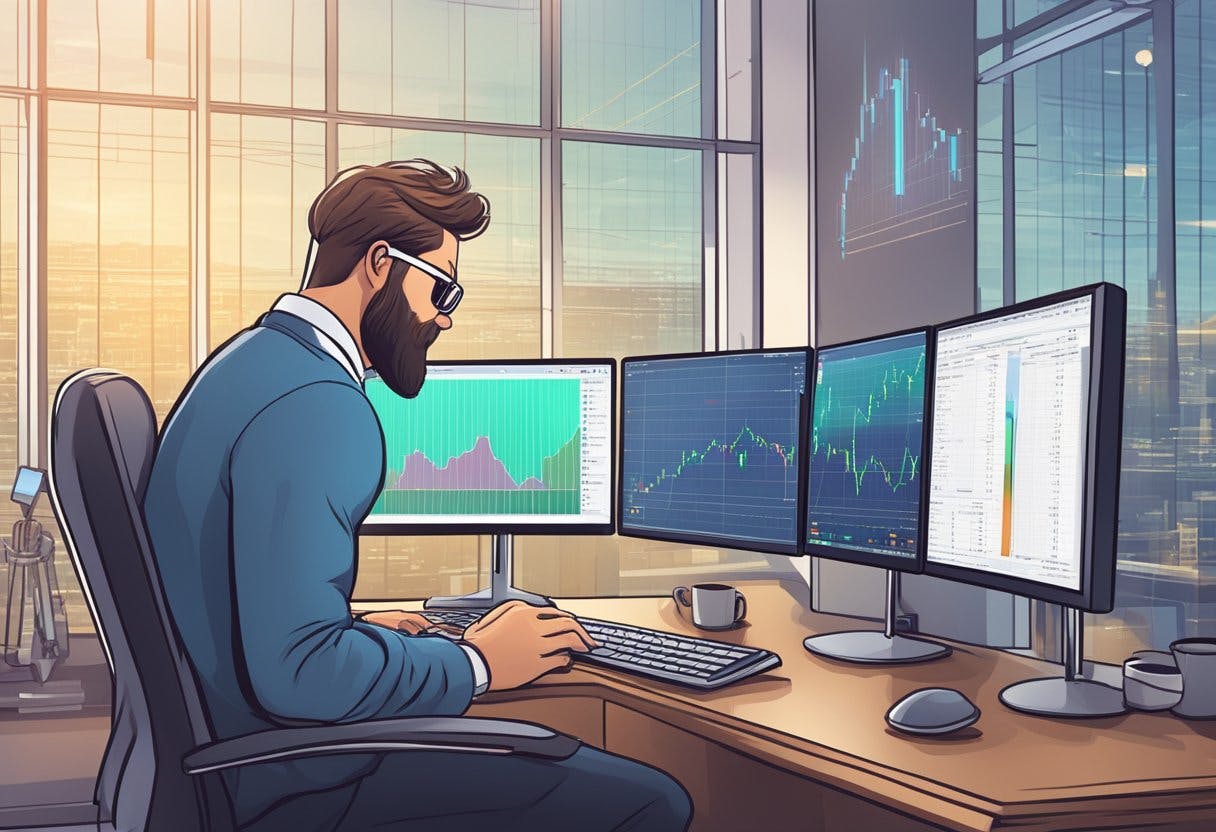
Margin trading in crypto can be a profitable venture, but it is not without risks. To mitigate these risks, traders need to employ effective risk management strategies. Here are some strategies that traders can use to manage risk in margin trading:
Setting Stop-Loss Orders
Setting stop-loss orders is an effective way to manage risk in margin trading. A stop-loss order is an order that automatically closes a position when the price of an asset reaches a certain level. This helps to limit losses and protect profits. Traders should set stop-loss orders at a level that is appropriate for their risk tolerance and trading strategy.
Diversification Strategies
Diversification is another important risk management strategy in margin trading. By diversifying their portfolio, traders can spread their risk across different assets and reduce their exposure to any one asset. This can help to protect against sudden price movements that could lead to significant losses.
Understanding Technical Analysis
Technical analysis is an important tool for margin traders. It involves analyzing past price movements and using this information to predict future price movements. By understanding technical analysis, traders can make more informed trading decisions and reduce their risk of losses.
Overall, risk management is a crucial aspect of margin trading in crypto. Traders must be aware of the risks involved and use effective risk management strategies to mitigate these risks. By setting stop-loss orders, diversifying their portfolio, and understanding technical analysis, traders can reduce their risk of losses and increase their chances of success.
Choosing the Right Crypto Margin Trading Platform
When it comes to choosing the right crypto margin trading platform, there are several factors to consider. In this section, we will explore some of the key considerations that traders should keep in mind when selecting a platform.
Comparing Exchange Features
One of the first things to consider when choosing a crypto margin trading platform is the range of features offered by the exchange. Some exchanges may offer a wider range of trading pairs, while others may have more advanced order types or trading tools. Traders should carefully consider their trading needs and goals to determine which features are most important to them.
Security and Liquidity Considerations
Security and liquidity are also important factors to consider when choosing a crypto margin trading exchange. Traders should look for exchanges that have a strong track record of security, including measures such as two-factor authentication, cold storage, and insurance coverage. Additionally, traders should consider the liquidity of the exchange, as this can affect the ease with which they are able to enter and exit trades.
Reputation and User Reviews
Finally, traders should take the time to research the reputation of the exchange and read user reviews before making a decision. Look for exchanges that have a good reputation in the crypto community and that have positive reviews from users. Some popular crypto margin trading exchanges include Phemex, PrimeXBT, KuCoin, BitMEX, and Bybit.
Overall, choosing the right crypto margin trading platform requires careful consideration of a range of factors. By taking the time to research and compare different exchanges, traders can find a platform that meets their trading needs and goals while also prioritizing security and liquidity.
Best Practices for Successful Margin Trading
Margin trading can be a lucrative way to increase profits, but it can also be risky. To be a successful margin trader, one should follow some best practices that can help minimize risks and maximize profits.
Develop a Solid Investment Strategy
Successful margin traders have a well-developed investment strategy that they follow consistently. This strategy should include a clear understanding of the market, the asset being traded, and the trader’s risk tolerance. It is essential to develop a trading plan that is specific to the trader’s goals and objectives.
Maintain Appropriate Margin Levels
It is crucial to maintain appropriate margin levels to avoid margin calls and liquidations. Margin levels should be checked regularly, and traders should be prepared to add additional funds if needed. Experienced traders often recommend keeping the margin level above 30% to avoid margin calls.
Use Isolated Margin
Using isolated margin can help limit losses by preventing losses on one position from affecting other positions. This can help traders manage their risk more effectively.
Consider Long and Short Positions
Margin trading allows traders to take both long and short positions. While long positions allow traders to profit from price increases, short positions allow traders to profit from price decreases. Traders should consider both long and short positions when developing their investment strategy.
Manage Buying Power
Traders should be aware of their buying power and use it wisely. Buying power is the amount of money available to purchase additional assets. It is important to manage buying power carefully to avoid overextending oneself.
Be Mindful of Interest Rates
Traders should be aware of the interest rates associated with margin trading. Lending rates can affect the cost of borrowing, while interest rates can affect the value of the assets being traded. It is important to be mindful of interest rates when developing an investment strategy.
By following these best practices, margin traders can increase their chances of success and minimize their risks. It is essential to be a knowledgeable and experienced trader to be successful in margin trading.
Frequently Asked Questions
How does margin trading amplify financial gains in cryptocurrency investments?
Margin trading allows traders to borrow funds to increase their buying power and amplify their potential profits. For example, if a trader has $1,000 and wants to buy $2,000 worth of Bitcoin, they can use margin trading to borrow an additional $1,000 to make the purchase. If the price of Bitcoin goes up, the trader will make a profit on the full $2,000 investment, not just the initial $1,000. This can result in higher returns than traditional trading.
What inherent risks should traders consider when engaging in margin trading?
Margin trading also comes with inherent risks. Traders can lose more money than they initially invested, known as a margin call. This can happen if the value of the asset they purchased drops too much, and the collateral they put up is no longer enough to cover the borrowed funds. Additionally, margin trading requires traders to pay interest on the borrowed funds, which can eat into profits.
Can margin trading lead to increased losses, and how can traders mitigate this?
Yes, margin trading can lead to increased losses if traders do not manage their risk properly. Traders can mitigate this risk by setting stop-loss orders to automatically sell their assets if the price falls below a certain level. They can also limit their borrowing to a certain percentage of their total investment and avoid using too much leverage.
What regulatory considerations must US traders be aware of when margin trading in crypto?
US traders must be aware of the regulatory landscape surrounding margin trading in crypto. In the United States, margin trading is regulated by the Commodity Futures Trading Commission (CFTC) and the National Futures Association (NFA). Traders must comply with these regulations, which include minimum capital requirements, risk disclosure, and anti-money laundering measures.
How do cryptocurrency exchanges facilitate margin trading, and what features do they offer?
Cryptocurrency exchanges facilitate margin trading by providing traders with access to borrowed funds and allowing them to trade on margin. Many exchanges offer features such as stop-loss orders, margin call notifications, and margin trading calculators to help traders manage their risk.
What are the key differences between margin trading on platforms like Binance and Kraken?
The key differences between margin trading on platforms like Binance and Kraken include the types of assets available for margin trading, the maximum leverage allowed, and the fees charged. Binance offers margin trading on a wider range of assets and allows for higher leverage than Kraken, but Kraken has lower fees and a more robust trading engine. Traders should research the different platforms and choose the one that best fits their needs and risk tolerance.
Read More
